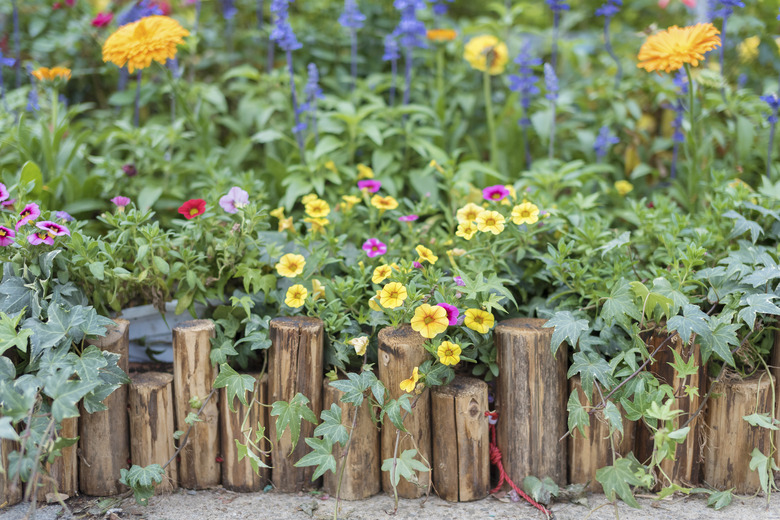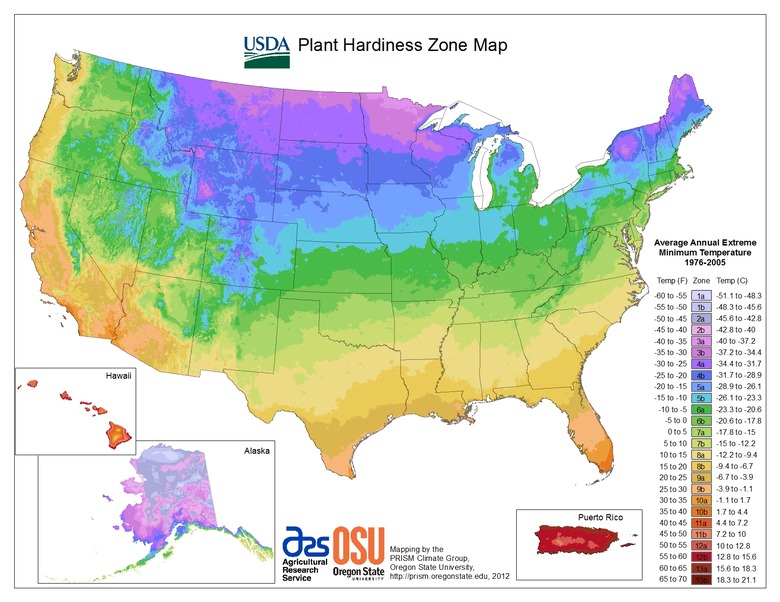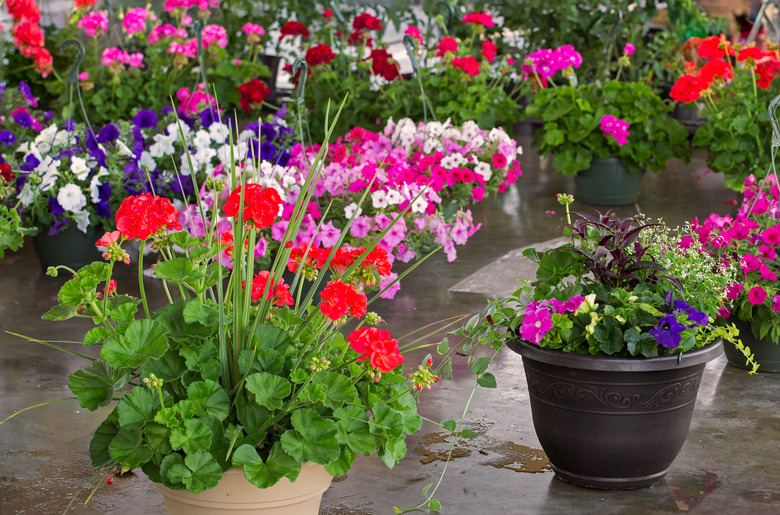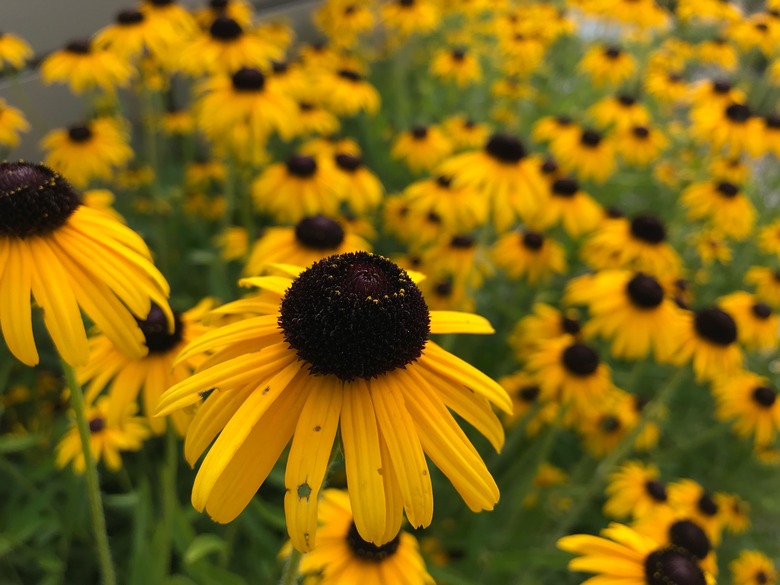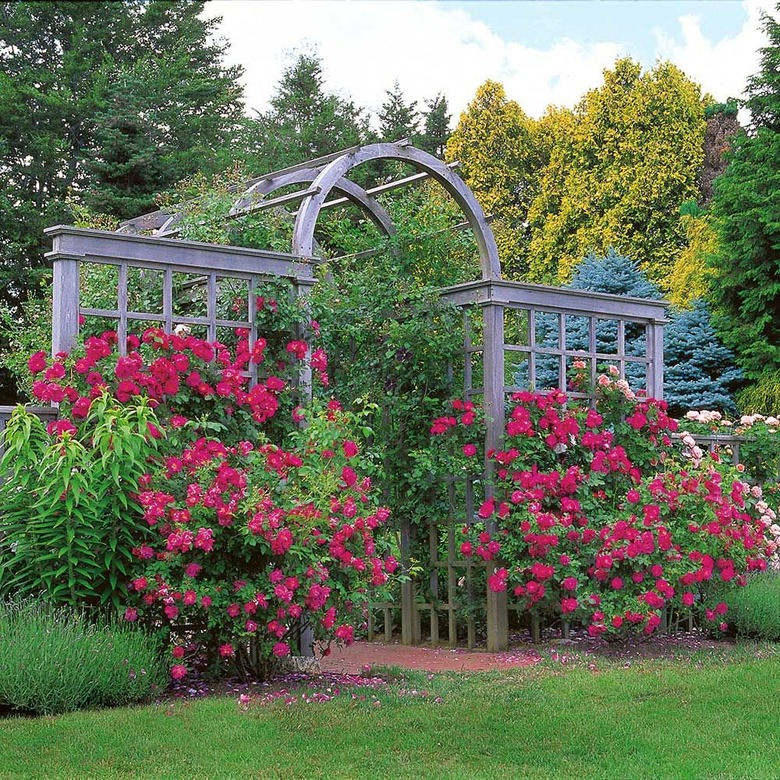Best Flowers For Longlasting Bloom
When you plan your landscape and flower beds, consider a plant's color, height, texture, and shape to create a sense of rhythm and harmony. To keep your garden blooming from early spring into fall, you can include a variety of annuals, perennials, and shrubs — especially those with long-lasting blossoms that will give you the most bang for your buck. To help you prepare for a trip to your local garden center, we've gathered a list of our favorite plants that are worthy of your consideration.
Tip
Take note of a plant's hardiness zone to ensure it will thrive in your location. And when you're shopping, use a plant's botanical name because common names, such as daisy, can refer to more than one type of plant.
Garden Terminology
Garden Terminology
Here's a brief refresher of terms that we'll use in our list of great garden plants.
- Hardiness zone refers to temperature zones based on the lowest average temperature an area experiences during the winter. Plants that are hardy in a particular zone are considered perennials, and plants that are not hardy are considered annuals. Many plants that are perennial in warmer zones are grown as annuals in colder regions. The United States Department of Agriculture developed the plant hardiness zone map (pictured below) and has an interactive map on their website.
- Annual is a plant that grows for one season and will not survive the winter; therefore, you'll need to plant it each year. Some plants we refer to as annuals thrive as perennials in different zones. Annuals are an inexpensive way to fill in flower beds while perennials become established and also provide a great option for changing colors each year.
- Perennial is a plant that is cold hardy and will return each spring. .These plants add structure to a garden since you'll only plant them once.Some perennials have a very long life and others survive only a few years.
- Shrub is a small- to medium-sized plant with multiple woody stems. Shrubs create the permanent structure and backdrop for perennials and annuals.
- Full sun plants should have 6 or more hours of direct sunlight each day. Remember, plants flower more in sunshine.
- Partial sun or partial shade plants should have 4 to 6 hours of direct sunlight each day.
- Full shade plants should have less than 4 hours of direct sunlight each day.
Annuals
Annuals
Annual are planted to add instant color in borders, flower beds, and container gardens. As a class, annuals are longer-blooming plants than most perennials. Most annuals are relatively long-blomers, but here are some favorites:
- Ageratum houstonianum is a traditional blue flower that begins blooming in late spring and keeps going until the first frost.
- Geranium (Pelargonium) is the ubiquitous flower grown in containers across the country. Plants bloom mainly during the spring and summer, and flower colors range from white to pink to red. Pelargoniums are tender perennials, so most places in the United States treat them as annuals; however, you can winter them over indoors.
- Globe amaranth (Gomphrena globosa) have round purple blooms that last from summer until frost.
- Impatiens walleriana grows well in shady spots with filtered light. Flowers blossom in a variety of shades, including pink, red, purple, orange, white, and bicolor. The plants are usually grown as an annual; although, they are hardy in zones 10 and 11. New Guinea Impatiens are a tropical version of Impatiens, which provide a larger variety of color and can tolerate a bit more sun; however, they are not hardy anywhere in the United States.
- Marigold (Tagetes) is a classic summer-into-fall garden flower with bright yellow to orange blossoms and a strong scent that keeps garden pests at bay. 'Moonsong Deep Orange' (Tagetes erecta) has rich color and blooms continuously without pinching or clipping. Plus, it attracts butterflies.
- Million bells (Calibrachoas) appears similar to small yellow petunias and are lovely in a container. The plants are hardy in zones 9 to 11.
- Pansy (Viola x wittrockiana) is an annual plant with purple and yellow blossoms that are often used to provide early-season color in container gardens and window boxes. Pansies are hardy in zones 4 to 8, but most people treat a pansy as an annual because it doesn't tolerate hot summers very well.
- Purple wave petunia (p_etunia F1 'Wave Purple'_) is a cascading plant covered in blossoms that performs wonderfully in containers or planted near the edge of a retaining wall. It grows in all zones as an annual.
- Sunflower (Helianthus annuus) is another garden classic that's fun to watch grow from small seeds into giants that tower over the garden. For flowers with a single stem and large flower head with edible seeds, choose either the 'Mammoth Russian' or 'Russian Giant' varieties.
- Begonias (tuberous begonias) grow in either an upright or cascading form and are best known for their showy flowers that bloom from summer to fall in the shade.
- Madagascar periwinkle or annual vinca (Catharanthus roseus) has small pink, purple, or white blossoms and glossy foliage that thrive during the hot days of summer into the fall.
- Zinnias are available in a variety of sizes and colors. Profusion zinnia (Z. hybrida) provide bright, showy flowers all summer and into the fall. The Double Zahara™ Raspberry Ripple zinnias are especially long blooming.
Perennials
Perennials
When shopping for perennials, be sure to choose plants that are hardy in your location. Some nurseries offer perennials that stretch the limits, providing a challenge for experienced gardeners or people willing to risk investing in a plant that might not survive the winter. Many gardeners are opting for native plants. In general, perennials are shorter-blooming plants, but there are many that provide color for several weeks, even months. Here are some favorites:
-
Astilbes grow in shade and can provide colorful blossoms throughout the growing season. Astilbe japonica blooms in late spring and early summer; whereas, Astilbe chinensis blooms in middle to late summer. They're both hardy in zones 4 to 8.
-
Balloon flower (Platycodon grandiflorus) present blue blossoms from June through August in zones 3 to 8.
-
Beardtongue (Penstemon digitalis), especially the Husker's Red variety, provides pink blooms on maroon stems through the entire summer. It's hardy in zones 3 to 9.
-
Black-eyed Susan (Rudbeckia fulgida sullivantii 'Goldsturm') blooms typically from July through October and it's hardy in zones 3 to 11.
-
Cheddar pink (Dianthus 'Feuerhexe' Firewitch) provides masses of bright pink color that's perfect for a rock garden or border. Plants are hardy in zones 3 to 8.
-
Cimicifuga, snakeroot, or bugbane (Actaea racemosa) produces candle-like spikes with airy white blossoms from May through August and is hardy in zones 3 to 8.
-
Coneflower (Echinacea purpurea) is a garden staple with pink to purple daisy-like flowers that bloom mid-summer to mid-fall. The plants are easy to care for and hardy in zones 3 to 9.
-
Coreopsis verticillata 'Moonbeam' produces delicate yellow flowers all summer and into the fall. It's hardy in zones 3 to 9.
-
Cranesbill (Geranium) is a true Geranium, not to be confused with the ubiquitous annual Pelargonium that's commonly grown in containers and referred to as a geranium. There are hundreds of species, cultivars, and hybrids, which means they're readily available at a local garden center. Everyone raves about 'Rozanne' because it reblooms during the growing season and the foliage turns red in the fall. It's hardy in zones 5 to 8; however, there are other varieties that will grow well in even colder climates.
-
Daylilies (Hemerocallis) are easy-care perennials with showy vase-like flowers. Each blossom lasts only a day; however, each stem holds multiple buds and the plant keeps producing new stems throughout the five-month long blooming season. The most prolific bloomers are 'Stella de Oro,' 'Happy Returns,' and 'Stella Supreme.' Daylilies are hardy in zones 3 to 9.
-
Evergreen candytuft (Iberis sempervirens) produce small clumps of delicate white flowers that appear in the spring and continue blooming into the fall. The plants are hardy in zones 5 to 9.
-
Fernleaf bleeding hearts (Dicentra) can bloom on and off throughout the growing season in cool climates. They're hardy in zones 3 to 9.
-
Hellebores (Helleborus) are a shade-loving plant that start blooming in late winter and last through early spring. They're hardy in zones 4 to 9.
-
Hardy hibiscus (H. moscheutos) has huge flowers on tall stems and puts on a show from late spring until first frost. The plants are hardy in zones 5 to 10. (Tropical hibiscus, though a prolific bloomer, cannot survive freezing temperatures; therefore, they can tolerate nothing colder than USDA zone 9.)
-
Joe Pye Weed (Eupatorium purpureum) is a very tall wildflower topped with a cluster of rosy blooms that attract butterflies. It's hardy in zones 4 to 9. We recommend the show-stopping E. maculatum 'Gateway' with stems 4 to 7 feet tall, which is hardy in zones 4 to 8.
-
Painted daisy (Tanacetum coccineum) blooms in early summer and reblooms until the first frost. It's hardy in zones 3 to 7.
-
Pincushion flower or butterfly blue (Scabiosa columbaria) produces frilly blue blossoms from late spring through early fall, and it's hardy in zones 4 to 8.
-
Russian Sage (Perovskia atriplicifolia) produces a clump of lavender or blue flowers during the summer and fall and it's hardy in zones 4 to 9.
-
Shasta daisy (Leucanthemum X superbum 'Snow Lady') is a compact white daisy that blooms all summer. It's hardy in zones
4 to 9.
-
Yarrow (Achillea millefolium) is a classic, easy to grow perennial that produces yellow blossoms from June to September. It's hardy in zones 3 to 10.
Shrubs
Shrubs
Flowering shrubs provide height in a foundation planting and serve as an anchor to additional flower beds in the yard. Some of the best flowering types include:
- Blue spirea (Caryopteris x clandonensis 'Korball') blooms from early summer through the fall. It is hardy in zones 5 to 9.
- Climbing rose 'William Baffin' is worthy of mention, even though it's not a shrub but rather a climber. It produces an abundance of pink flowers in late June well into fall and is hardy in zones 3 to 10. Plant this rose near a sturdy obelisk, trellis, arbor, or pergola to support 10 feet of growth.
- Hydrangeas are a garden staple because there are varieties for sun or shade with different colors of blossoms that add beauty from summer through fall. Even the faded, dry flowers will add winter interest to a garden. We suggest looking for a reblooming hydrangea, such as 'Endless Summer' (Hydrangea macrophylla varieties) that are hardy in zones 5 to 9 or a tree hydrangea (Hydrangea paniculata) that blooms into late summer and is hardy in zones 3 to 8.
- Rose of Sharon (Hibiscus syriacus) blooms from midsummer to early autumn in zones 5 to 9. The sterile 'Minerva' variety will keep your yard free of seedlings.
- Shrub roses come in many varieties and are suitable for zones 3 to 9. Knock Out® roses bloom every 5 to 6 weeks from spring to frost, resist disease, and grow in zones 4 to 11.
- Smoke bush (Cotinus coggygria) is a tall shrub (12 feet) with large pink plumes and stunning purple leaves that change color in the fall. It's hardy in zones 4b to 8.
- Spirea (Spiraea japonica) is another easily-grown shrub that flowers during mid-summer in zones 4 to 9. The 'Goldmound' variety has attractive golden to lime colored foliage.
